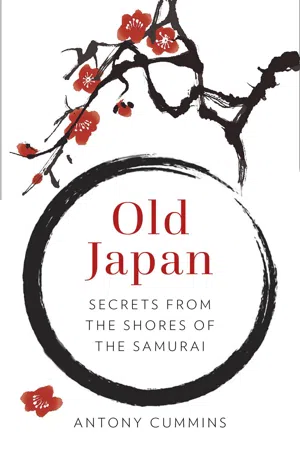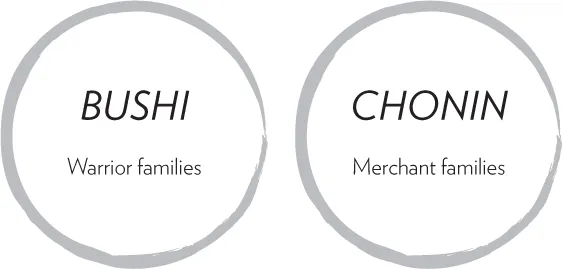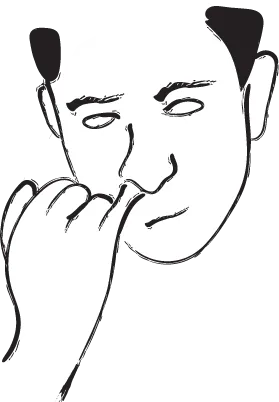
This is a test
- 240 pages
- English
- ePUB (mobile friendly)
- Available on iOS & Android
eBook - ePub
Book details
Book preview
Table of contents
Citations
About This Book
Japan has often been thought of as a closed country, but before the country was closed in 1635 many travellers from the West were able to experience its unique traditions and culture. Their accounts speak of legends of powerful dragons and devils, tales of the revered emperor and the protocol surrounding him, following complex etiquette in everything from tea ceremonies to footwear, and bloodthirsty warlords who exacted cruel and unusual punishments for the smallest of crimes. In Old Japan Antony Cummins uses these captivating eyewitness accounts to reveal fascinating facts and myths from the mysterious Land of the Rising Sun.
Frequently asked questions
At the moment all of our mobile-responsive ePub books are available to download via the app. Most of our PDFs are also available to download and we're working on making the final remaining ones downloadable now. Learn more here.
Both plans give you full access to the library and all of Perlego’s features. The only differences are the price and subscription period: With the annual plan you’ll save around 30% compared to 12 months on the monthly plan.
We are an online textbook subscription service, where you can get access to an entire online library for less than the price of a single book per month. With over 1 million books across 1000+ topics, we’ve got you covered! Learn more here.
Look out for the read-aloud symbol on your next book to see if you can listen to it. The read-aloud tool reads text aloud for you, highlighting the text as it is being read. You can pause it, speed it up and slow it down. Learn more here.
Yes, you can access Old Japan by Antony Cummins in PDF and/or ePUB format, as well as other popular books in Histoire & Histoire du Japon. We have over one million books available in our catalogue for you to explore.
Information
Topic
HistoireSubtopic
Histoire du Japon
Japanese Society
The Battle for the Soul of the East
As the samurai era moved through its final quarter, new Western ideas and a more modern approach was starting to infiltrate the land. In the 1500s, guns and Western armour had come to Japan, changing warfare considerably, and later Dutch science started to seep in through the limited trade that was still allowed. Medical and scientific thinking started to change, and the country began to divide into those who believed in the old Japanese ways and those who saw the accuracy of modern Western thinking. This movement truly started to shape modern Japan and is one reason why, when the Americans arrived in the 1800s, Japan was ready to divide between keeping the old ways and opening up to the world.
Sir Isaac Newton
The first time Sir Isaac Newton’s work was translated into Japanese was 1777.
The Calendar
The Japanese calendar is the same as the Chinese calendar, and both are different from the Western calendar. As you will have noticed, the Western New Year starts on 1 January but each year Chinese New Year changes its start date. This is because they have to calculate the correct day based on the movement of both the moon and the sun. Sometimes they have to add days to the year or even an extra month, just to make sure it aligns. This means that each year the start date has to be calculated and then told to the people.
Samurai in Charge of the National Calendar
Samurai not only took charge of the security of the country, but many families had professions that they carried on for generations. The Chinese calendar used in Japan needed to be calculated each year and it was the job of two samurai families to make sure the nation had the correct astronomical calculations. This meant that the two major warrior households not only studied warfare and interacted with samurai politics, but most of their time was spent on the study and recording of the stars and the movement of the heavens, almost like astronomer-warriors. However, a low-ranking person from out of nowhere reformed the way the Japanese looked at the heavens, with a more modern approach that took away much of their power with this new way of thinking; he was made a samurai for his efforts.
Peasant Uprisings
Most village documents have been destroyed and many records were lost. However, statistics show that between 1600 and 1868 there were approximately 3,000–5,000 peasant uprisings, making it around twenty per year across all of Japan. Some of them were violent, some very organised. This is why I often have an issue with the Tokugawa Period (1600–1868) being known as the period of peace, because in this time there were the siege of Osaka Castle, the Shimabara Rebellion, the Keian Uprising, the Boshin War and, of course, up to 5,000 peasant revolts. However, the land was actually at peace in comparison to the period of wars.
The Rule of Men
Men in old Japan were often legally free to have sex with prostitutes or lower-class women, but wives were not allowed to sleep with other men. Some classes of women could be killed for simply talking to another man (but remember we are talking about a 1,000-year period so things changed from time to time).
Muddy Waters
There is a form of short analogy in Japan that is based on the idea of muddy water. It is said that if the water flow at the surface level is cloudy, dirty and unclear, it means the water above the riverbed is also stained. This means that if the ruler is not pure, the people will also be corrupt, but if the ruler is pure then the people will follow suit, and therefore society should not be like muddy water.
Stubbornness Versus Steadfastness
One chronicler witnessed some Christians being martyred by being held over a waterfall that fell into hot sulphur water from a natural spring. The place was nicknamed ‘hell’. He said that even when they were held over the edge they did not recant their faith and so were pushed to their death in the boiling water below. He made the observation that perhaps Japanese society promoted stubbornness instead of steadfastness. He came to this conclusion because the people who were being tortured did not actually know much about Christianity itself; they were actually being stubborn about their right to those beliefs and not the beliefs themselves. This is a complex social question but it is worth thinking about.
The First Dissection of a Human Body
While the Japanese used to cut up bodies for fun to test katana, they did not start medically dissecting bodies until 1771. They did this to test the validity of Dutch anatomy charts, and the first proper dissection was performed on an old lady who sold tea in Kyoto. The Japanese were astonished at how accurate these medical charts were, and Western medicine gained more of a foothold.
Price-Rigging
In the period of peace towards the end of samurai times, the merchants really came into power and it is said they communicated with each other and rigged prices up and down the country, maintaining good profits for all. Their power was becoming so great that real strife had become evident between the warriors and the merchants.

Universal Texts
In the early, more unified times, Japanese society concentrated on a pursuit of Buddhist literature and teachings, with a focus around the court in Kyoto. During the turbulent times in the 1400s and 1500s things began to change, and in the new, unified Japan of the post 1600s they focused on neo-Confucianism. Both times of unity focused on a set of ideals; one swayed more towards Buddhist teachings, the other to the words of Confucius. Japan has always been a mix of religions.
Skin Disease
One common factor that continually repeats itself in foreign accounts of the Japanese is poor skin or skin disease. Today it is reversed; I would say the Japanese have great skin in the modern world and gauging the age of a Japanese person can be difficult. Medieval accounts say that there were sores and scabs and skin problems seen on many of the people. Other accounts state that leprosy was quite common in Japan.
Travel advice said that you should bathe in an inn during the day, because the Japanese bathe after they have worked. This way the traveller would have got clean, ‘virgin’ water to bathe in before the guests and locals made it filthy.
Stifle That Racket
Western chroniclers state that the music of the Japanese is discordant and screechingly bad to listen to. They claim it is not as harmonious as Western music, but that it is a discordant wail and all Japanese sing together in a painful cacophony.
Japanese music can be an acquired taste, but once acquired the discordant sound is sweet, and a trip to a Japanese event accompanied by music can bring a smile to one’s face.
Squeeze One Out
Japanese women about to give birth, and who were used to wearing their wide sashes quite loose, were bound up extremely tightly, so much so that it almost flattened their belly. They did this because they said that it helped avoid birthing complications.
Japanese Prisons
One Westerner who found himself in a Japanese prison said it was a wooden room that was boarded up tight so that very little light entered and the prisoners lived in a constant dimness. It was 33 feet long, 12 feet wide and quite low. Everyone was stripped to a loin cloth and positioned in rows. The heat was unbearable in summer and it was rat-filled in winter (but apparently still warm in winter because there were so many people).
Eradicating History
When Christianity was banned in Japan, the churches, burial grounds and living quarters of all the Christians were taken down, removed, or lived in by native priests, the idea being to eradicate all trace of the then banned religion.
Carry Me Across the River
In Japan, there was a tradition of people who carried others across the river, acting as a form of water taxi by giving piggybacks over narrow places. However, if there had been too much rainfall a person could be stuck at these crossing points for days, waiting for the water level to fall enough to be carried across.
Japanese Rice
Some forms of Japanese rice were actually imported from South East Asia and were only then produced on a large scale in Japan, thus becoming Japanese rice.
PICK A WINNER

Western people pick their nose with their index finger or thumb but Japanese people pick it with their little finger because they tend to have tiny nostrils.
The Silence of the Masses
One of the great wonders of Japan, even to this day, is the silence that is maintained by mass populations of people. Standing on a train in central Tokyo, surrounded by hundreds of people, you can travel in pure...
Table of contents
- Cover
- Title
- Copyright
- Contents
- Foreword
- Introduction: The Magic of Old Japan
- The Samurai
- Japanese Society
- Architecture
- The Grotesque and the Macabre
- Strange and Curious Things
- Putting the Flavour Back in Japan
- Bibliography